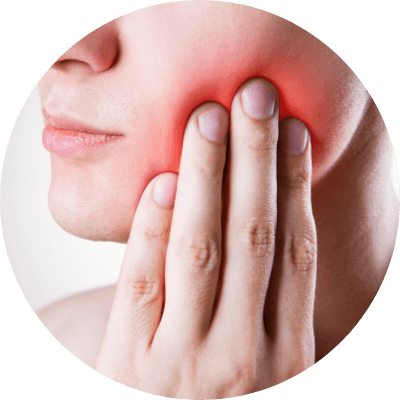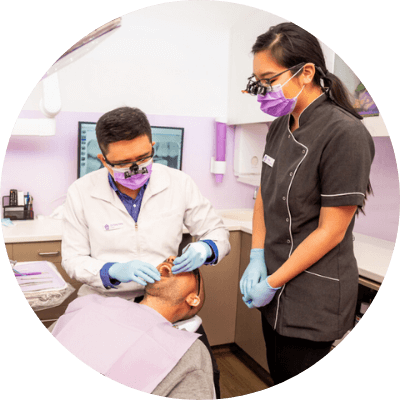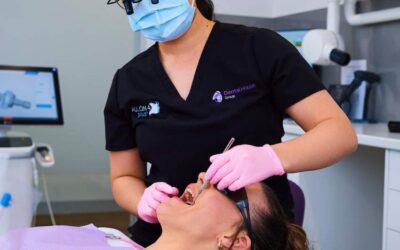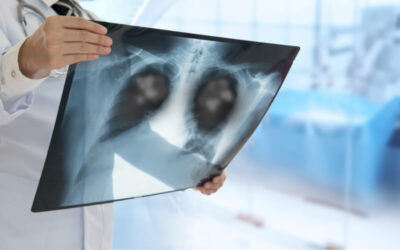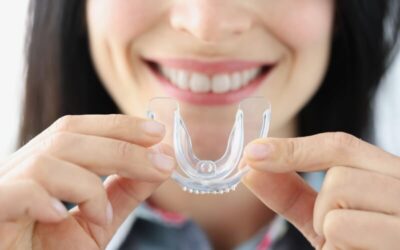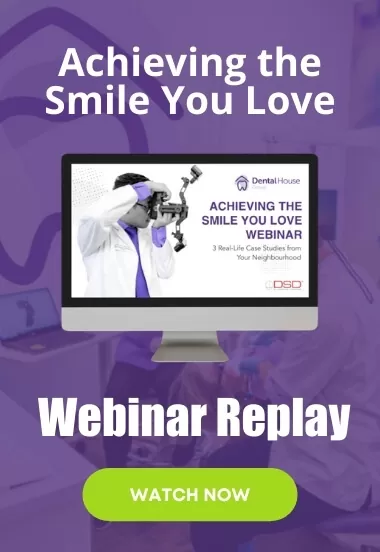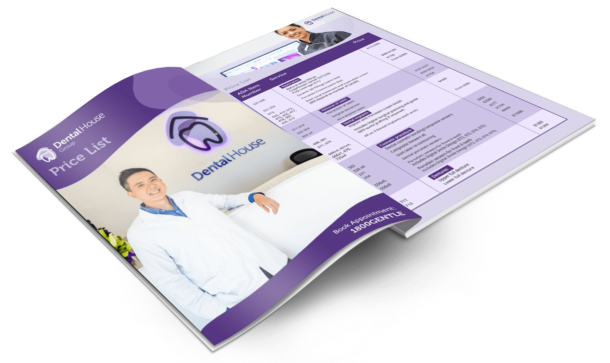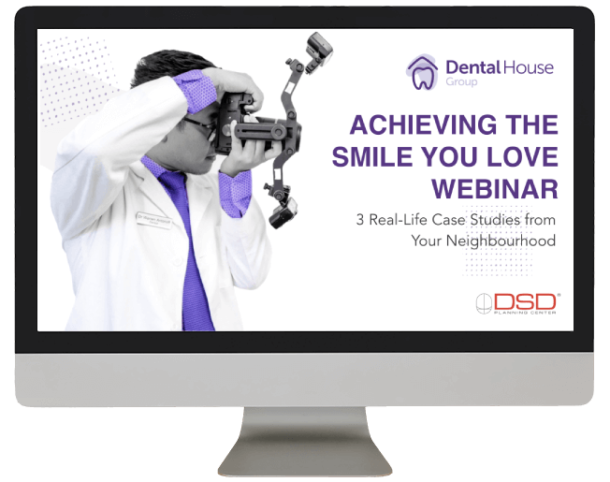Dentistry’s Fresh Plan: CRISPR Programmable Proteins
Dentistry’s Fresh Plan: CRISPR Programmable Proteins
It happens because basically, we’re code-making machines, wired to find contextual clues in the written word. Still, there’s only so much disorder these codes can be in before pattern recognition is lost.
Certainly predictability plays a part, logic gives context, and double letters are markers. It’s why ‘aoccdrnig’ is faster and easier to decipher than ‘acocrdrnig’.
However this typoglycemia works, it makes us read CRISPR as ‘crisper’ and find some relational rationale at nano-speed between that and ‘programmable proteins’ … A new personalised meat substitute, possibly?
Undoubtedly very flamed, very chargrilled, and assuredly very, very AI. It’s 2023; everything’s AI. So much so that ‘artificial’ will be dropped soon for the better mental health of super technologies.
CRSPR has been cookin’ since 1987.
To say that it began in the late 1900s makes it sound like it was part of the Industrial Revolution. In the same way there are dog years, there are technology years, and under that orbit and measure, it was.
In the very same year that the world population hit five billion, Tracy Ullman debuted The Simpsons, Michael Jackson proved how much Bad wasn’t and the FDA approved AZT, the DNA sequence that prompted the acronym for ‘Clustered Regularly Interspaced Short Palindromic Repeats’ was an accidental discovery of E.coli bacteria by an Osaka University research team.
Unlike Bon Jovi at the time, they weren’t livin’ on a prayer.
CRISPR was a major advance in genome-editing technology where specific changes are made to DNA.
Cell therapy refers to the introduction of new genetic material, or the modification of faulty genes linked to a particular disease. It’s been around since the 1960s in terms of incorporating DNA into human cells, but gene therapy wasn’t even a suggestion until the ‘70s.
Think about that.
In the decade that had the Beatles take themselves away, Spielberg give us Jaws, Apple and Led Zeppelin happen, amid all that denim were thoughts of gene therapy.
Along every one of those regularly interspaced were repeated moments of somebody wearing flares or a flowery shirt.
One of three distinct issues CRISPR technology can solve is genetic disease.
Cystic fibrosis, Huntington’s disease and sickle cell disease are each the result of a single gene mutation. Targeted gene-editing using CRISPR technology can repair the mutated gene.
The drug development process is also greatly improved by directly regulating genetic material in order to determine the genes responsible.
It’s also a useful strategy too, for the development of more accurate disease models and more reliable drug testing, particularly in solving antibiotic resistance, a major concern worldwide.
CRISPR makes discovering the alternatives that are less prone to microbial sensitivities, more accessible.
The broad advantage of this technology is that can also serve as an antibacterial tool: programmable targeting of bacterial DNA with Cas3 gives an enzyme variant that melts bound DNA in the prevention and treatment of periodontal disease.
As an inflammatory autoimmune disease, it progressively destroys the hard and soft tissues that support the teeth. Currently, treatments are invasive and generally lengthy. Sometimes even with treatment there is tooth loss; without it it’s almost inevitable.
Primarily a disease borne of pathogenic microorganisms finding a good place to live, the global health impact of gum disease is on par with antibiotic resistance.
During the infection stage, pathogenic bacteria face inhospitable conditions and foreign DNA. Defense and immunity counteraction are immensely reliant on clustered regularly interspaced short palindromic repeats (CRISPR)-Cas.
In this microbial circus Big Tent, bacteria often express virulence genes, that are regulated by the CRISPR-Cas system as part of the stress response to stress conditions and contentious elements.
There is ever-growing evidence that the virulence role CRISPR-Cas has in periodontal disease is the same system that can be targeted to reduce that bacterial load.
It’s a technology that can advance dental strategies and accuracy in diagnostic and therapeutic outcomes, with the ultimate endeavour the prevention and control of the progression of the disease.
As exciting as it is, it’s a solution of the future.
As with any human trials, along with the science and technology come ethical questions and investment on many levels. Discovery and development are industries. Possibly the last concepts to not make their creators money for altruistic reasons were Volvo’s seatbelt, and John Walker in 1824 for his safety match.
Feng Zhang, professor at MIT and lead researcher believes that more than 6,000 hereditary diseases with the potential of being treated or cured using CRISPR technology. Innovative approaches have been made in the treatment of some cancers with the University of Pennsylvania commencing the first clinical trials in 2019.
It was also the year Chinese scientist He Jiankui was sentenced to three years for using CRISPR technology to edit human embryos, the 21st century equivalent to body snatching. Three babies were born as a result; and he (He; haha) was reportedly released in 2022.
There are legal battles over who invented the technique and its patents. Zhang, the Broad Institute, Harvard, and American biochemist Jennifer Doudna are all in dispute. Maybe they should all go for an unnecessarily risky ride in a Volvo not wearing a seatbelt for another perspective on the sharing of knowledge for the betterment and improved health conditions of humankind.
As a genome technology, a tool still in its infancy, debate rages in the scientific, philosophical and legal communities in terms of how, or even whether CRISPR should be used at all.
It’s a manipulation of the human genetic code, with its consequences for generations to come largely unknown. The risk of unintended and permanent outcomes is a not unsubstantial part of the controversy.
CRISPR is a fresh new age in modern medicine and dentistry. When genes can be altered, eliminated or switch on or off, it’s molecular biology with the potential to personalise periodontal care.
2022 marked some successful CRISPR-based treatment trials in haematological diseases
The research teams of the New York Genome Center, Columbia University and New York University have combined a deep learning model with CRISPR screens. AI can predict on-and-off target activity. Its biomedicine with rapidly sophisticated machine learning models, with equity and balanced rectitude trying to catch up, lkie the hraet cntcahig up wtih the barin.
We’re code-making machines with machines making codes. Short palindromic repeats. AI predictive and CRISPR screens with neural network technology yet still not knowing its impact on generations to come.
Until then, your own fresh plan in dentistry is to take your oral health seriously, and preventatively.
Brush properly, do it regularly, and check for changes. See your dentist twice a year. Take it as a deep cleaning model, and you’re a sophisticated learning machine.
DISCLAIMER:
The content has been made available for informational and educational purposes only. Melton Dental House does not make any representation or warranties with respect to the accuracy, applicability, fitness, or completeness of the content.
The content is not intended to be a substitute for professional personal diagnosis or treatment. Always seek the advice of your dentist or another qualified health provider with any questions you may have regarding a dental or medical condition. Never disregard professional advice or delay seeking it because of something you have read or seen on the Site.
Services Mentioned
More Dental Articles
Red, Red Wine: Is It Beneficial For Oral Health?
Is red, red wine beneficial for our oral health? Or does it just feel good at the time & if you overdo it you feel like cr*p the next morning…
Detecting Oral Cancer Is Given The Brush
In 2020, Oral Cancer accounted for almost 380,000 cases, and 180,000 deaths globally. It’s on the increase with diagnosis incidents…
Could The Surge In Pneumonia In Children Be Related To Their Teeth Brushing?
Kids and teenagers are not self-maintaining, and nor is their oral health. Teeth brushing: spend time with it frequently…
What Is Dental Sleep Medicine? It’s Not Sleep Dentistry
Dental Sleep Medicine is the intersection of dentistry with issues affecting sleep. Snoring, sleep apnoea, & related breathing disorders…





